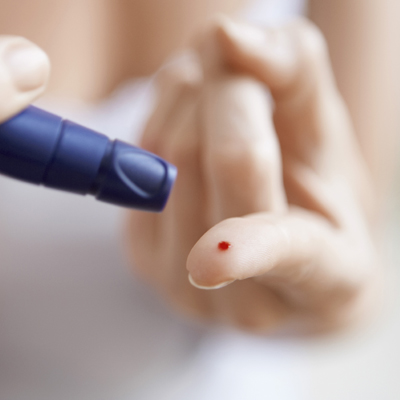Diabetes: Bitter Sweet
- July 10, 2015
- Posted by: Spotscreen
- Category: Articles
Diabetes is Australia’s fastest growing chronic disease. According to Diabetes Australia approximately 1.7 Million Australians are currently living with prediabetes and a further 275 Australians develop diabetes each day.

Blood Sugar Levels and Diabetes
Maintenance of normal blood sugar levels (BSL) is important for proper metabolism. Glucose stimulates the release of insulin in the blood. The hormone Insulin facilitates the uptake of glucose by tissues and is therefore essential.
Blood glucose is used as energy for the brain, stored as glycogen in liver and muscle and stored as fat when the livers capacity is exceeded. When we eat food high in carbohydrates such as pasta (complex carbohydrates) or sugar (simple carbohydrates) our body converts them into glucose. This provides us with the energy needed to perform everyday functions.
When our BSL becomes higher than normal, like it does after we eat, it triggers specialised cells to release a hormone called insulin. This hormone tells our body’s cells to store the glucose for later use.
In Diabetes, insulin stops being produced by the specialist cells, or sometimes causes the cell walls of the body to become unreceptive to accepting insulin. This means that our BSL remains constantly high. As a result, the high circulating sugar can significantly damage our blood vessels and cells, creating major health problems for our body. These include CVD and peripheral vascular disease (PVD) to the eyes, affecting vision.
Prediabetes: A Wake-Up Call
Prediabetes awareness is on the rise with increasing trends of physical inactivity, overweight and obesity. Classifications of prediabetes include; Impaired fasting glucose (when fasting plasma glucose levels are greater than upper limit but not sufficiently elevated to be diagnosed as diabetes), and impaired glucose tolerance (patients often have normal blood glucose levels in daily lives but exhibit hyperglycaemia when tested for diabetes).
The blood glucose levels that determine whether you have pre-diabetes or diabetes are illustrated in the table below.
| Normal | Pre-diabetes | Diabetes | |
|---|---|---|---|
| Fasting blood glucose level (mmol/L) | <6.0 | <7.0 (Impaired fasting glucose) | >7.0 |
| Blood glucose level 2 hours after taking 75g glucose (mmol/L) | <7.8 | 7.8 – 11.0 (Impaired glucose tolerance) | ≥11.1 |
Diabetes Takes its Course
Without intervention 1 in 3 Australians with prediabetes will develop Type 2 Diabetes within 5-10 years. Progression however is not inevitable, prediabetes can be seen as a window of opportunity to improve health and reverse long term diabetes damage to the heart and circulatory system.
Progression to Type 2 diabetes is the most serious consequence of untreated prediabetes, because type 2 diabetes can lead to other complications such as; high triglyceride levels, heart and kidney disease, stroke, blindness, erectile dysfunction and limb amputation.
Watch your waistline
Type 2 Insulin Dependent Diabetes Mellitus is the most common type accounting for 85-95% of all diabetes cases. It is most prevalent later in life (> 45 years of age), possibly due to the reduced activity, weight gain and loss of muscle mass associated with ageing.
Although genetics play a role; central adiposity (abdominal fatness), poor diet, inadequate sleep, hypertension, adverse blood lipid profiles and low physical activity are all diabetes risk factors. Diabetes onset is strongly associated with weight gain as 90% of all patients are obese. Losing as little as 5-10% of your overall body fat can reduce your risk.
Stop Diabetes in its tracks
- Stop smoking; reduce risk of cardiovascular events
- Engage in high intensity exercise bursts; particularly after a meal
- Eat at regular intervals throughout the day
- Consume nuts, fruit, vegetables and berries
- Eat plenty of wholegrain cereals and legumes
- Consume foods high in Vitamin C, E and fibre
- Include low GI food
Glycaemic Index
Glycaemic index (GI) measures the effect carbohydrate foods have on blood sugar levels and the rate of digestion and absorption. In general foods high in refined sugar or starch have a higher GI in comparison to high fibre foods.
| GI Value | Range |
|---|---|
| High | 70+ |
| Moderate | 56-69 |
| Low | <55 |
GI Suggestions:
- Swap normal white potato for sweet potato
- Swap white bread for grainy or wholemeal
- Swap Jasmine for Basmati rice
If you have pre-diabetes, annual Oral Glucose Tolerance Tests (OGTT) are essential to assess glucose metabolism and monitor improvements or progression to Type 2 Diabetes.
If you have diabetes regular in home glucometer checks ensure adequate treatment options. If left untreated diabetes may cause severe damage to organs and reduce life expectancy. Be sure to keep a record of blood glucose levels to assist your doctor and never forget that maintaining healthy lifestyle measures is just as vital following diabetes diagnosis.
Fore information on Diabetes, visit: https://www.diabetesaustralia.com.au
1300 305 230
enquiry form
Leave a Reply
You must be logged in to post a comment.
